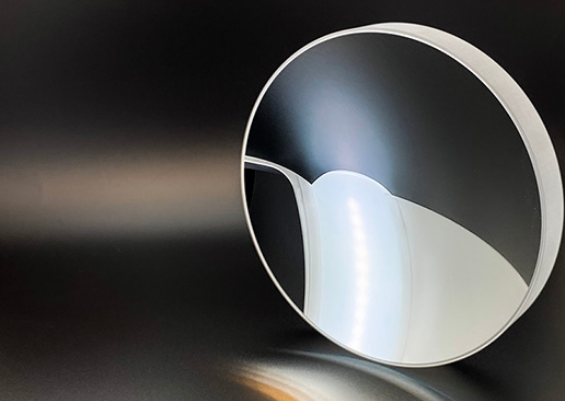Plano-Concave Lenses for Laser Optics
Oct. 07, 2023
Laser optics is a field that relies heavily on precision and control of light. Plano-concave lenses play a vital role in this domain, as they are designed to diverge and manipulate laser beams effectively. In this article, we will delve into the characteristics, applications, and benefits of plano-concave lenses in laser optics.
Understanding Plano-Concave Lenses
Plano-concave lenses, as the name suggests, have one flat (plano) surface and one concave surface. They are commonly made from materials like optical glass, fused silica, or other optical materials. This unique design imparts specific optical properties that make them valuable in laser optics.
Diverging Light
The most distinctive feature of a plano-concave lens is its ability to diverge light. When parallel light rays pass through the convex side (the flat side) of the lens, they spread out, forming diverging rays on the concave side. This property is crucial for controlling and manipulating laser beams.
Focusing and Collimating
Plano-concave lenses are used to either focus or collimate laser beams. Depending on the orientation, they can be employed to bring divergent beams to a point of focus or convert a point source into a parallel beam.
Characteristics of Plano-Concave Lenses
Plano-concave lenses exhibit several key characteristics that make them valuable in laser optics:
Negative Focal Length
Due to their diverging nature, plano-concave lenses have a negative focal length. This means that they disperse incident parallel light rays and diverge them away from a focal point. The focal length of a plano-concave lens is determined by its radius of curvature and refractive index.
Thin Center and Thick Edges
Plano-concave lenses are thickest at the center and thinner towards the edges. This design is important for their optical properties. When light rays pass through the lens, they refract more at the edges, causing divergence.
High Precision
In laser optics, precision is of utmost importance. Plano-concave lenses are manufactured with high precision to ensure accurate control of laser beams. Small variations in curvature, thickness, or refractive index can have a significant impact on beam quality.
Coatings
Many plano-concave lenses are coated with anti-reflective coatings. These coatings reduce reflection losses and enhance the transmission of laser light. Coatings can be customized to match specific laser wavelengths, optimizing their performance.
Custom Plano-Concave Lenses for Laser Optics
Applications of Plano-Concave Lenses in Laser Optics
Plano-concave lenses find a wide range of applications in laser optics, contributing to the control and manipulation of laser beams. Some common uses include:
Beam Expanding
Plano-concave lenses are often employed for beam expanding applications. When a laser beam needs to be enlarged to cover a larger area, a plano-concave lens can be used to diverge the beam. This is particularly useful in applications like laser marking and material processing, where a larger beam diameter is required.
Collimation
Collimation involves converting a divergent beam into a parallel beam. Plano-concave lenses can be used to achieve this. By positioning the lens at the appropriate distance from the laser source, it can transform a divergent laser beam into a collimated, parallel beam. Collimation is essential in applications such as laser diode modules, laser pointers, and laser communication systems.
Focusing
In situations where a laser beam needs to be focused to a small point, plano-concave lenses can be used as well. By placing the concave side facing the incident laser beam, the lens converges the light to a focal point. This is critical in applications like laser engraving, laser cutting, and microscopy, where precision focusing is essential.
Astigmatism Correction
Plano-concave lenses are also used for astigmatism correction in laser systems. Astigmatism is an optical aberration that causes light rays to focus in two different planes. Plano-concave lenses can be employed to introduce controlled astigmatism, compensating for undesired aberrations and improving overall beam quality.
Benefits of Plano-Concave Lenses in Laser Optics
The use of plano-concave lenses in laser optics offers several advantages:
Beam Control
Plano-concave lenses provide precise control over the divergence, collimation, and focusing of laser beams, allowing for tailored beam characteristics in various applications.
Versatility
These lenses are versatile and can be used with different laser systems, including gas lasers, solid-state lasers, and diode lasers, at various wavelengths.
High Transmission
When coated with anti-reflective coatings, plano-concave lenses can achieve high transmission efficiency, minimizing reflection losses and maximizing light throughput.
Improved Beam Quality
In applications where astigmatism correction is required, plano-concave lenses can significantly enhance beam quality and reduce optical aberrations.
Conclusion
Plano-concave lenses are fundamental components in laser optics, providing precise control over laser beams' divergence, collimation, and focusing. Their unique design and optical characteristics make them indispensable in a wide range of applications, from beam expansion to astigmatism correction. By using plano-concave lenses, laser systems can achieve the precision and control necessary for various industrial, scientific, and medical applications.




















